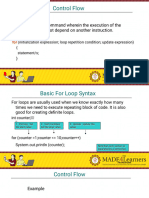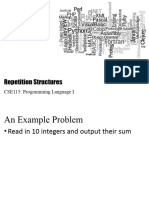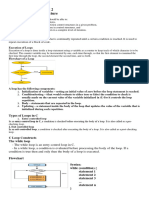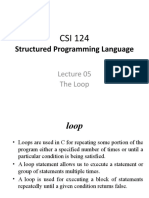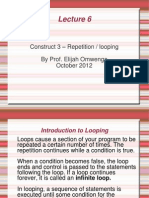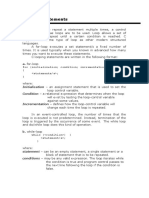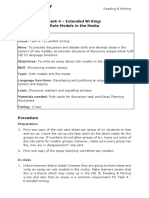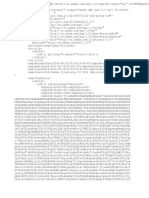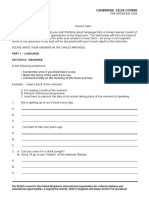0% found this document useful (0 votes)
10 views20 pagesModule 5.2 - Looping (Iterative Statements)
Uploaded by
2301710Copyright
© © All Rights Reserved
We take content rights seriously. If you suspect this is your content, claim it here.
Available Formats
Download as PDF, TXT or read online on Scribd
0% found this document useful (0 votes)
10 views20 pagesModule 5.2 - Looping (Iterative Statements)
Uploaded by
2301710Copyright
© © All Rights Reserved
We take content rights seriously. If you suspect this is your content, claim it here.
Available Formats
Download as PDF, TXT or read online on Scribd
/ 20










